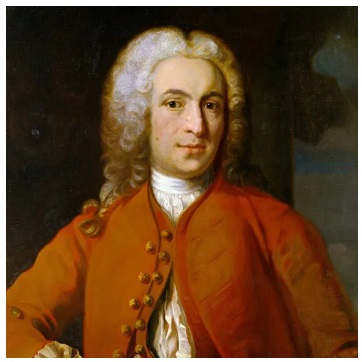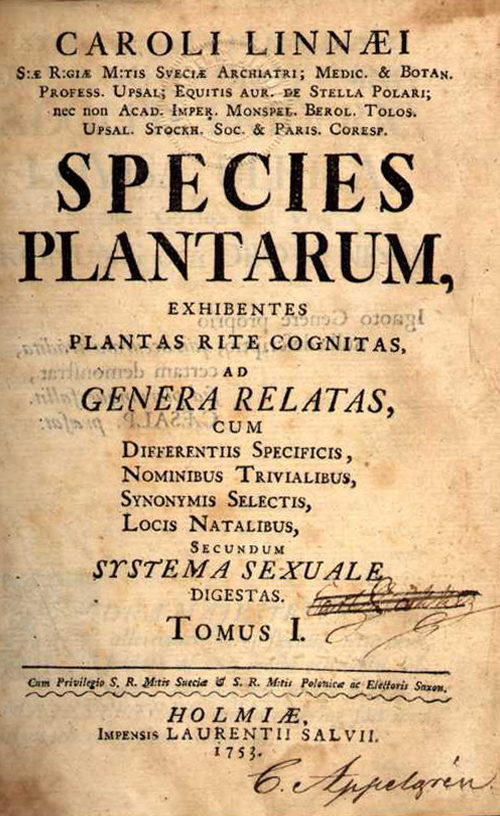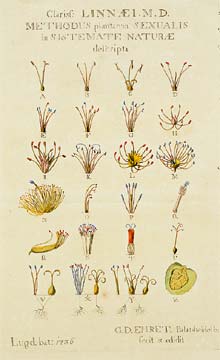
Speaker: Dr Michael Jones
Subject: ” Bringing order to the natural world : the work of Carl Linnaeus” – An insight into the most famous biologist after Darwin.
The focus of Michael’s wide-ranging exploration of the life and work of Carl Linnaeus, was his revolutionary methods of plant nomenclature.
Linnaeus’s gift to the scientific community was a systematic classification system for the natural world, aimed at standardizing the naming of species and organizing them based on their characteristics and relationships.
At the heart of Linnaeus’s system was binomial nomenclature, a simple yet revolutionary approach. He proposed that all organisms should be described using only two Latin words: one denoting the “genus” and another its “species”. This concept, quickly gained acceptance as the standard naming convention for animals and plants.
Michael demonstrated with the help of audience participation how tricky it is to describe a simple object in detail without such a system. The concept of “genus” combined with “species” was indeed a revolutionary idea, replacing the increasinly-unwieldy polynomial (many-named) methodology.


Beyond taxonomy, Linnaeus also stirred controversy by devising a method to classify plants based on their sexual floral organs. Linnaeus’ system was based on the idea of counting the male and female elements of plants – the stamens and carpels.
We learned that this so called “sexual system” did not meet with universal approval, especially from one particular Prussian botanist, Johann Siegesbeck, who described it as “lewd” and a “loathsome harlotry”.
However, despite this, Linnaeus is credited with establishing an international code of nomenclature which secures his fame and legacy as a self-styled “Prince of Botany” and “Father of Taxonomy”. We came away also with a sense that Carl Linnaeus, though obviously a genius, was not short of self-belief!
We are grateful to Michael for an informative evening with several surprises and anecdotes – a light touch to describe a complex subject.
About Dr Michael Jones
Dr Michael Jones has worked in education, both here in the UK and in Africa, but is now retired from full-time employment as Head of Science at Newman University, Birmingham. He is an enthusiastic botanist with a particular interest in parasitic plants. His PhD was on the parasitic genus of flowering plants, the Orobanche.
Further Info: The Life of Linnaeus
Born Råshult in the parish of Stenbrohult in Småland, Sweden, which was also the birthplace of Ingvar Kamprad founder of IKEA. Though not keen on the metier of his pastor father, Carl Linnaeus was inspired in early life by his father’s keenness on gardening.
At school, due to his interest in plants and science, Carl was encouraged to study medicine as a route to a study of herbal biology In 1728, after spending a year studying medicine at the University of Lund, Linnaeus transferred to Uppsala University.
Between 1732 and 1735, Linnaeus embarked on extensive travels throughout Sweden, focusing particularly on Lapland and northwest Sweden. His purpose was to meticulously document and gather information about the country’s natural resources.
Much detail of this important time of his development is available here:
Crucially, from these journeys, Linnaeus collected the material to be written about in Flora Lapponica – which was a noteworthy accomplishment of his early output.
Later Life
While continuing to lecture at Uppsala, he remained a student himself until 1735, when he then obtained his medical degree from the University of Harderwijk in Holland. Over the next three years, he spent considerable time in Holland, with additional travels to Germany, France, and England. Notably, Linnaeus supervised the zoo and gardens of the wealthy banker George Clifford during his stay in Holland. It was during this period that he published the first of many scientific papers and books including “Flora of Ceylon”
Upon returning to Sweden, Linnaeus practiced medicine in Stockholm. Later, he assumed the position of professor of botany at Uppsala University in 1741. As a professor and scientist, Linnaeus was both popular and influential. These students, whom he affectionately called his ‘apostles’, collected new plants and animals. Linnaeus then applied his innovative binomial system of nomenclature to name these discoveries.
In 1747, Linnaeus was appointed the chief royal physician, and in 1758, he was knighted, adopting the name Carl von Linné (which explains why we refer to the society as the Linnean Society). Despite illness toward the end of his career, Linnaeus continued to make significant contributions. His legacy extends beyond taxonomy; he was also a trailblazer in the study of ecology, describing relationships between living organisms and their environments.
A full summary of the life of Carl Linnaeus is available here:
